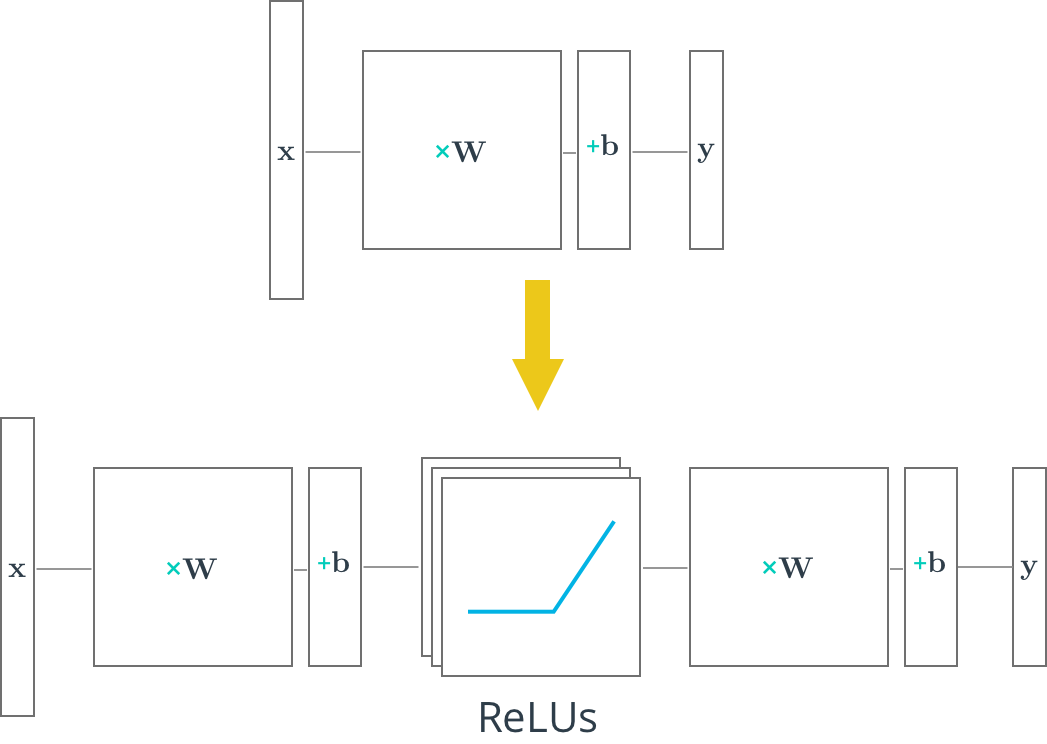11. Quiz: TensorFlow ReLUs
TensorFlow ReLUs
TensorFlow provides the ReLU function as tf.nn.relu(), as shown below.
# Hidden Layer with ReLU activation function
hidden_layer = tf.add(tf.matmul(features, hidden_weights), hidden_biases)
hidden_layer = tf.nn.relu(hidden_layer)
output = tf.add(tf.matmul(hidden_layer, output_weights), output_biases)The above code applies the tf.nn.relu() function to the hidden_layer, effectively turning off any negative weights and acting like an on/off switch. Adding additional layers, like the output layer, after an activation function turns the model into a nonlinear function. This nonlinearity allows the network to solve more complex problems.
Quiz
Below you'll use the ReLU function to turn a linear single layer network into a non-linear multilayer network.

Start Quiz:
User's Answer:
(Note: The answer done by the user is not guaranteed to be correct)